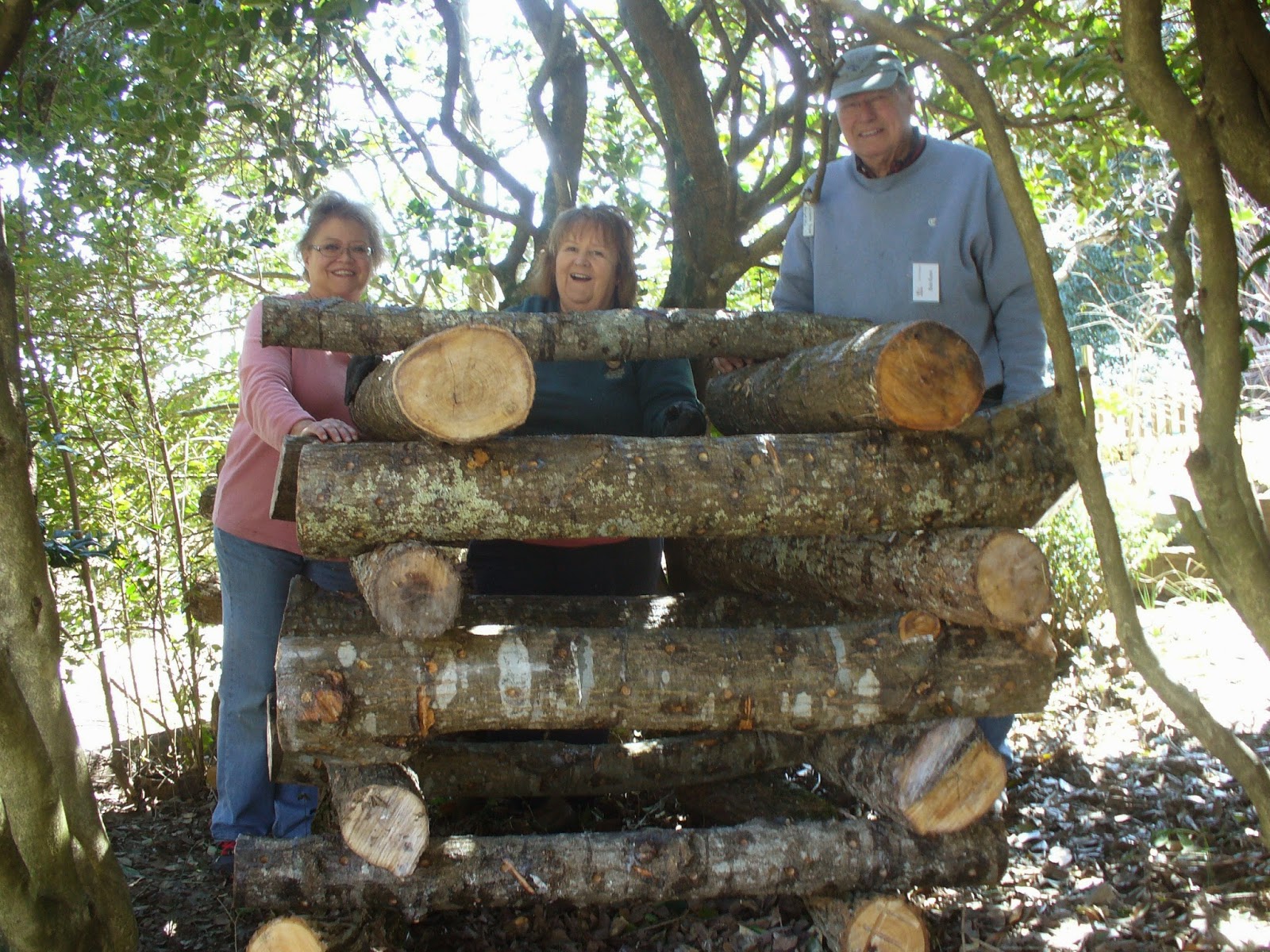 |
| Video: Full Episode |
As announced in class last week...this episode was amazing! It reveals a whole new dimension to plant 'behavior' and touches on so many of the subjects we've talked about in class.
 |
| Video: Full Episode |
 We're the Piedmont Planters - EMGV Interns 3-Season Vegetable Garden Team. We're ready to get down and dirty in the Cooperative Extension Demonstration Garden!
We're the Piedmont Planters - EMGV Interns 3-Season Vegetable Garden Team. We're ready to get down and dirty in the Cooperative Extension Demonstration Garden!
 |
Here is one of the last shots
of our deer friendly fencing in our vegetable garden behind
the Guilford County
Extension Office.
|
 |
| A few EMGVs came out to help take apart the old fence in preparation for our 8 foot impenetrable deer fence. |
 |
| The fence is down the new 8 foot tall fence will be up shortly. The deer will have to find some new gardens for munching |
 |
| Each post hole is filled with water because of this year's wet spring. |
 We're the Piedmont Planters - EMGV Interns 3-Season Vegetable Garden Team. We're ready to get down and dirty in the Cooperative Extension Demonstration Garden!
We're the Piedmont Planters - EMGV Interns 3-Season Vegetable Garden Team. We're ready to get down and dirty in the Cooperative Extension Demonstration Garden!
 |
| The whole gang is hard at work on multiple steps of the cultivation process. |
 | ||
| Two of our expert EMGVs are drilling using the 8.5mm Soft Steel Screwtip Bit With Stop Collar from Field and Forest Products. One of the tables eventually broke during the day from the heavy logs. |
 |
| Two of our EMGVs worked on inoculating the logs using the Thumb Style Brass Inoculator. It's also helpful to have one person moving the log while the other inoculates. |
 |
| Here is an up close shot of the inoculation. It is critical to make sure each hole gets spawn, which is easier said then done. |
 |
| We used an old $2 skillet purchased from a thrift shop to heat the cheese wax. Using natural fiber brushes is important because they will not melt like their synthetic counterparts. |
 |
| The logs were stacked in a log cabin fashion. Elm logs, which were not inoculated, were used for the base. . |
 |
| We ended up with 27 inoculated logs. If all goes well, the logs should produce shiitake mushrooms for 3-4 years. |
 |
| Here are a few of our EMGVs next to our new stack of inoculated logs. |
 |
| Here is our only casualty of the day. Lesson: One Heavy Log + Another Heavy Log = A Broken Table. |
 |
| The cost of Shiitake Mushrooms adds up! (Note: Shiitake is spelled incorrectly in the picture.) |
 We're the Piedmont Planters - EMGV Interns 3-Season Vegetable Garden Team. We're ready to get down and dirty in the Cooperative Extension Demonstration Garden!
We're the Piedmont Planters - EMGV Interns 3-Season Vegetable Garden Team. We're ready to get down and dirty in the Cooperative Extension Demonstration Garden!
 |
Here are a few essentials for inoculating
mushrooms.
1. Shiitakes Mushroom Spawn
2. 8.5mm soft steel screw tip bit w/stop collar
3. Thumb Style Brass Inoculator
We ordered our supplies from
|
 |
We used the West Wind Shiitakes Strain.
|
 |
| One
of our EMGVs graciously contributed white oak, willow oak, sweet gum, and elm logs for this project. One bag of mushroom spawn inoculates around 25 logs. (We grabbed a few extra logs!) |
 |
Cheese wax is used to cover the mushroom spawn in each
appropriate
hole.Smearing wax over exposed wood
reduces decay and drying out: including
both ends.
|
 We're the Piedmont Planters - EMGV Interns 3-Season Vegetable Garden Team. We're ready to get down and dirty in the Cooperative Extension Demonstration Garden!
We're the Piedmont Planters - EMGV Interns 3-Season Vegetable Garden Team. We're ready to get down and dirty in the Cooperative Extension Demonstration Garden!